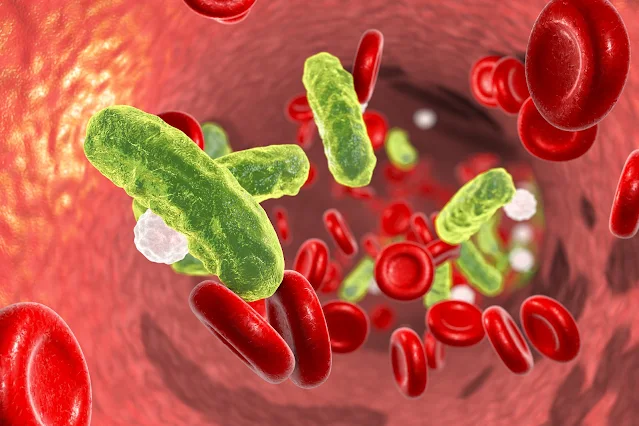Clinical Presentation: Sepsis is a clinical syndrome characterized by a dysregulated inflammatory response to infection. Rates of sepsis continue to rise secondary to medical advances such as the widespread use of indwelling intravascular catheters, increased implantation of prosthetic material such as, cardiac valves and artificial joints, and administration of immunosuppressive drugs and chemotherapeutic agents. These interventions serve to increase the risk of infection and subsequent sepsis. Sepsis is a continuum of conditions, from infection and bacteremia to sepsis and septic shock. Shock
The septic condition: Patients with early sepsis have
infection and bacteremia and are at risk for progressing to sepsis
and septic shock. Sepsis is defined as life-threatening organ
dysfunction caused by a dysregulated immune response to infection. We have previously discussed the body's response to incoming infectious agents under specific immunity, which you can read about in the link below.
Etiology:
Although evidence of infection is a diagnostic criterion for
sepsis, only 28% of patients with sepsis have bacteremia, and
slightly more than 10% will have primary bacteremia, defined as
positive blood cultures without an obvious source of bacterial
seeding. Common sites of infection among patients with sepsis
syndrome include the respiratory
tract, the genitourinary tract, abdominal sources such as, gall bladder,
colon, and wound or soft tissue infections. Respiratory tract infections
Bacteremia and sepsis: Gram-negative
bacteria including but not limited to; Enterobacteriaceae and Pseudomonas, previously the most
common cause of sepsis, have been supplanted by gram-positive
organisms, which now cause more than 50% of cases. Staphylococci are
the most common bacteria cultured from the bloodstream, presumably
because of an increase in the prevalence of chronic indwelling venous
access devices and implanted prosthetic material.
The incidence of
fungal sepsis has risen dramatically owing to an increase in
immunosuppressed and neutropenic patients. Sepsis
associated with P. aeruginosa, Candida, or mixed (polymicrobial)
organisms is an independent predictor of mortality.
Pathogenesis.
The normal host response to infection is recognition via pathogen
recognition receptors and immune cell migration, primarily by
neutrophils, to the site of infection, where they release
inflammatory mediators. The process is highly regulated, with
anti-inflammatory cytokines such as IL-10 suppressing release of
inflammatory cytokines (eg, TNF-α).
Pathophysiology: Sepsis occurs when the
inflammatory response overwhelms the local environment and becomes
systemic. The cause of the systemic reaction is likely multifactorial
and may include the effect of the microorganism, the release of large
quantities of proinflammatory mediators, and even the genetic
susceptibility of the individual. The different stages of sepsis
(early sepsis to septic shock) represent a continuum, with patients
often progressing from one stage to the next within days or even
hours after admission.
Sepsis generally starts with a localized infection. Bacteria may
then invade the bloodstream directly or may proliferate locally and release
toxins into the bloodstream. These toxins can arise from a structural
component of the bacteria such as endotoxin or may be exotoxins, which
are proteins synthesized and released by the bacteria.











No comments:
Post a Comment